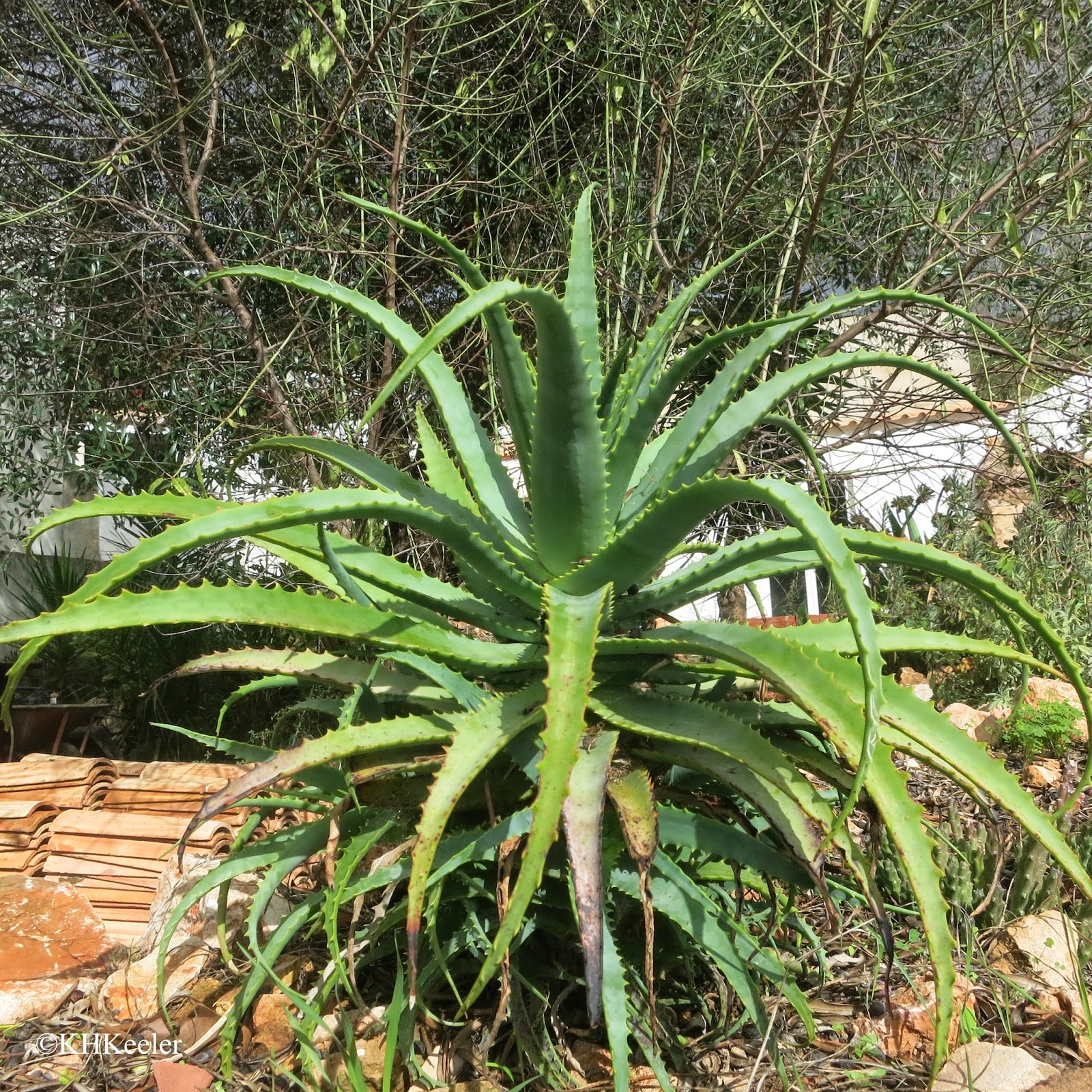Portugal and Spain in October surprised me because dawn was at nearly 8 am. One consequence of that was that I was up to appreciate the sunrise.
 |
| sunrise off Portugal |
We visited the port of Portm�o, and the towns of Alte and Silves. It was lovely-cool air, warm sunshine.
The climate was clearly very mild: there were orange and lemon trees, huge vera aloes, and brilliant bouganvilleas. The citrus are originally from southeast Asia, vera aloe is native to the Mediterranean and bougainvillea is from South America, quite a multinational mix, but none of them tolerate of more than a touch of frost.
 |
| orange tree |
 |
| vera aloe, more than 3' tall |
 |
| spectacular bouganvillea |
The fortress was allowed to crumble in place--minus a few stones hauled away to be used in local building projects--and blown dirt buried more of it, so it will probably restore rather well.
I was particularly enchanted by a big cistern built by the Moors (about 1100 AD) to collect water from the region's sudden storms. That was not abandoned when the fortress was. It was too useful to neglect so it remained in use until 1953 when the town got a more modern water system.
 |
| Upper end of the cistern at Silves |
 |
| Lower end of the cistern at Silves. |
The cistern had a large area to capture rain water. It sloped downhill from the edge of the wall and also to the east (which is toward to camera in both photos) so water moved toward the door. The door gave access to the pipes that carried the water to the village below the castle.
The castle wall was wide enough to walk easily around (though I had to watch for uneven stones).
The views from the walls were grand:
 |
| Looking through the crenulations of the wall, wall to the right |
 |
| View from the wall of the castle, Silves |
In Alte, the roads were clearly older than modern car traffic.
The now-traditional bright blue trim on houses was originally applied because the color was believed to protect the inhabitants from the devil and his minions, I was told.
 |
| House in Alte, Portugal |
 |
| Church of Our Lady of the Assumption, Alte |
 |
| Restaurant below the 11th century Moorish castle, Silves, Portugal |
As everywhere in Iberia, cultures are layered atop each other. Political change and disuse, earthquakes and weather continuously alter the face of the landscape. Historical monuments are there to see but modern life carries on around and over them.
I liked the area a lot but could not linger. That is one of the downsides of traveling by ship ("going on a cruise"): a limited time in each port. What cruises do well is introduce you to an area or take you to islands or coastal towns that are off the beaten track. The Algarve--and Portugal generally--are well worth an extended trip.
Comments and corrections welcome.
My trip organized by Gohagan Travel and Cal Discoveries
Kathy Keeler
More at awanderingbotanist.com



No comments:
Post a Comment